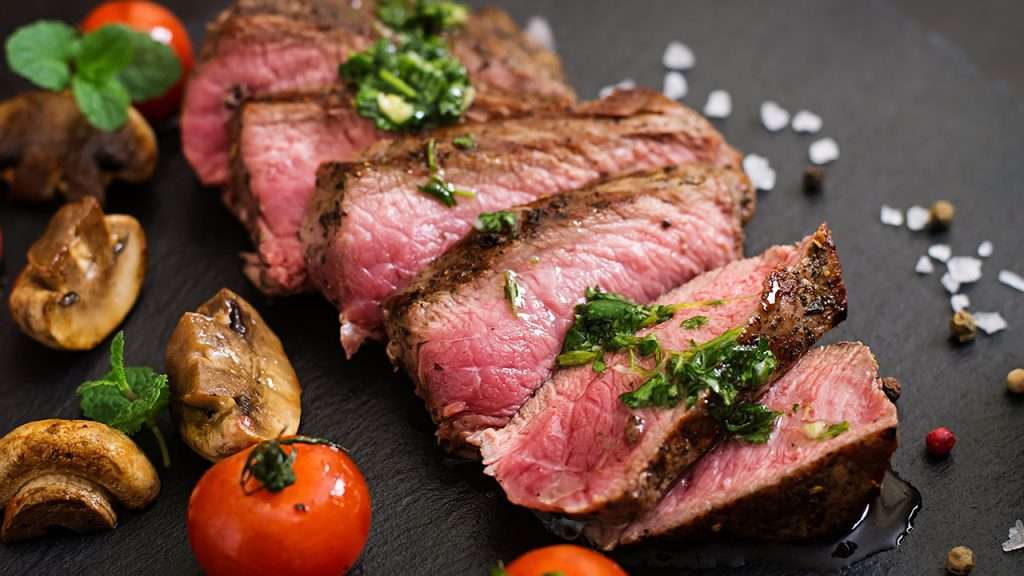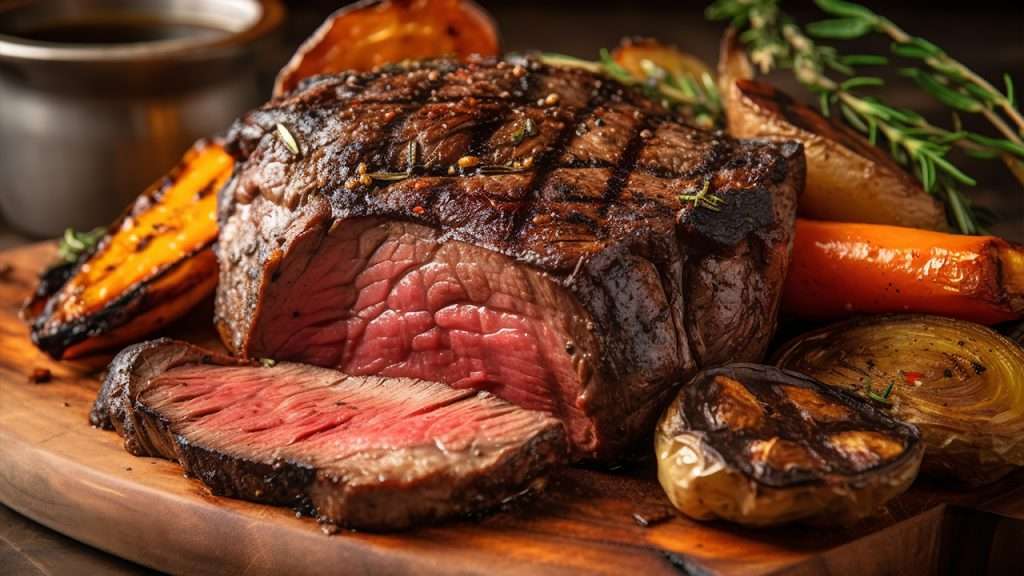
Cooking a rare steak very briefly allows the center to stay cool, maintaining a vibrant red color in the interior. The searing of the steak’s exterior creates a delicious crust. The level of doneness, ranging from rare to well-done, can greatly impact the taste, texture, and overall dining experience. So, let’s dive into the world of steak secrets and explore the differences between rare, medium, and well-done steak.
The Art of Cooking Rare Steak
Rare steak is cooked very briefly, allowing the center to remain cool and the interior to retain a vibrant red color. The exterior of the steak is seared, creating a delicious crust. A rare steak, cooked to around 125°F (52°C), feels extremely tender and soft to the touch, retaining its succulent juiciness.

In terms of taste and texture, rare steak offers a rich, juicy, and buttery flavor. The meat is incredibly tender and can practically melt in your mouth. However, the center remains more raw compared to other cooking levels, and some people might find this unappealing. Additionally, the risk of bacterial contamination is higher in rare steaks. So it’s essential to ensure that it comes from a reputable source.
Mastering the Medium Steak
Medium steak requires a bit more cooking than rare, achieving a balance between a seared exterior and a warm, pink center. It is typically cooked to an internal temperature of about 135°F to 145°F (57°C to 63°C). When pressed with a finger, a medium steak should feel firm yet still spring back a bit.

A medium steak offers a combination of tenderness, juiciness, and a more pronounced flavor. The chef cooks the meat through, leaving a hint of pinkness in the center.This results in a desirable texture and taste for many steak enthusiasts. This level of doneness is often considered a safe choice as it minimizes the risk of foodborne illnesses while maintaining a delightful dining experience.
Saucing Up Well-Done Steak
The chef prepares the well-done steak thoroughly, ensuring it attains an internal temperature of around 160°F (71°C) or higher This level of doneness results in a uniformly browned interior with little to no pinkness. A well-done steak feels firm and yields the least amount of juice when pressed.

The flavor profile of a well-done steak is distinct. It tends to be drier and firmer compared to rarer levels of doneness. The prolonged cooking time can cause some loss of tenderness and juiciness, making the steak chewier and potentially less enjoyable for those who prefer a more succulent experience. However, some individuals prefer well-done steak for its charred exterior and a more uniform texture throughout.
In summary, the difference between rare, medium, and well-done steak lies primarily in the cooking time and resulting internal temperature. Cooking a rare steak briefly yields a tender, juicy, and vibrant center. A medium steak achieves balance with its seared exterior and a warm, pink center. In contrast, a well-done steak is thoroughly cooked. Having little to no pinkness, resulting in a firmer texture and a more intense flavor.
When it comes to choosing the right level of doneness for your steak, personal preference is key. It’s worth noting that the quality and cut of the meat also play a significant role in the final outcome. Whether you prefer a juicy and tender rare steak, a balanced medium, or a well-done charred exterior, the choice is ultimately yours to savor and enjoy.

Leave a Reply